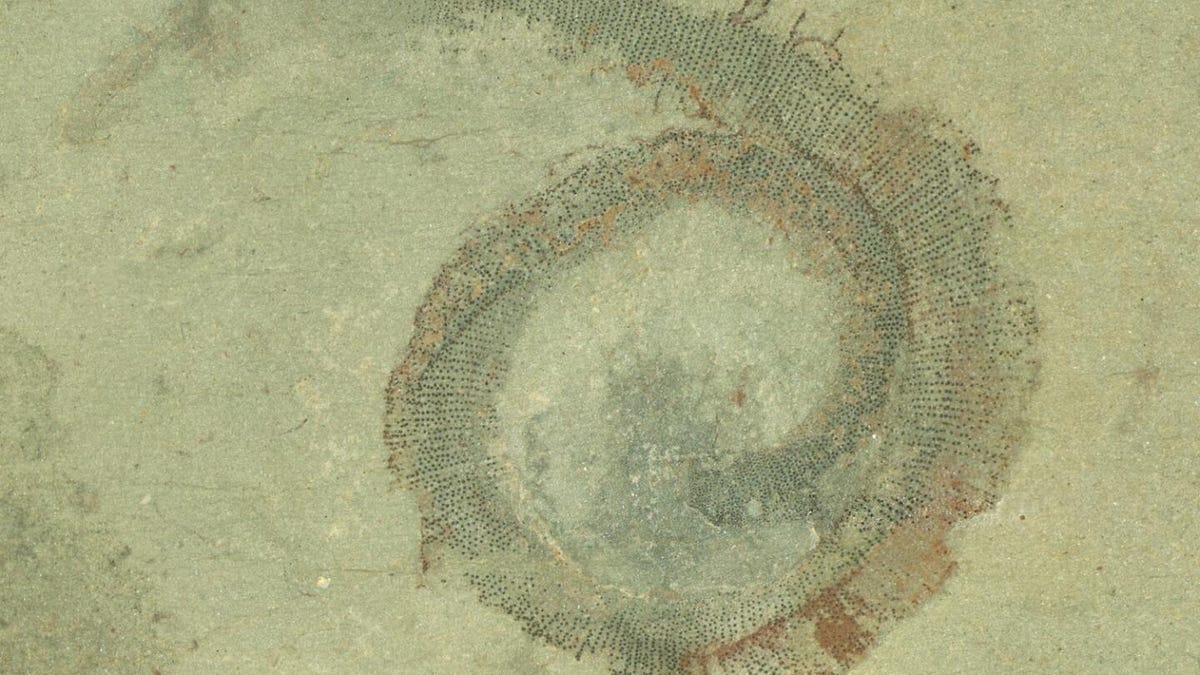Ancient sea worm with spines finally identified, solving 50-year mystery
A mysterious marine worm that has perplexed scientists for decades finally gets the spotlight -- and a new name.

Here's a closer look at the new specimen of the worm Utahscolex ratcliffei.
A strange, forgotten worm that perplexed scientists 50 years ago is finally getting a name and the attention it's due. Meet Utahscolex ratcliffei.
Scientists came up with the name after investigating a new worm fossil discovered in Utah's Spence Shale area using scanning electron microscopes, energy-dispersive X-ray spectrometry and optical microscopy.
"I know some people might say, 'Why should we care about these?'" graduate student Anna Whitaker, a member of the research time, said in a statement. "But the taxonomy of naming all these species ... underpins all the science that we do today. Looking at biodiversity through time, we have to know the species diversity; we have to know as correctly as we can how many species there were and how they were related to each other."
The findings appear in the paleontological journal PalZ. Other team members include Utah high school science teacher Paul Jamison, along with University of Kansas Biodiversity Institute researcher Julien Kimmig and University of Missouri researcher James Schiffbauer.
The primordial marine worm had previously frustrated researchers who only had access to another less well-preserved partial fossil of the same kind of worm in 1969. The previous scientists gave up trying to figure out what it was and dumped it in the "wastebasket" genus Palaeoscolex, where all unusual worms go until more information can be discovered.
Whitaker's new findings confirmed that the marine worm fossil shouldn't be classified as Palaeoscolex, but instead represents a new genus of sea worm called Utahscolex.
"Before the new species that we acquired there was only one specimen known from the Spence Shale," Whitaker said. "But with our new specimen we discovered it had characteristics that the original specimen didn't have. We were able to update that description, and based on these new characteristics -- we decided it didn't fit in its old genus."
The Utahscolex worm's mouth parts are also closely related to the priapulid marine worms that exist in oceans today, according to Whitaker. These worms also share more creepy comparisons.
"They have a proboscis that can evert, so it can turn itself inside out and it's covered with spines," Whitaker said. "That's how it grabs food and sucks it in. It behaved very similarly to modern priapulid worms."
While that description sounds more like something out of the killer mutant worm movie Tremors, people can relax knowing the Utahscolex ratcliffei worm won't be sneaking up on them. The worm existed during the early Cambrian Period, around 540 million to 525 million years ago.

